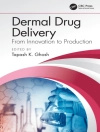Over the past twenty years, stress echocardiography has developed into a well-established technique that is versatile, patient friendly, and relatively inexpensive. This new, extensively revised and enlarged edition of Stress Echocardiography documents all of the very significant advances made since the fourth edition. The early chapters place the technique within a historical context and describe its pathophysiological basis. Thereafter, all aspects of stress echocardiography are discussed, clearly and in detail, by the distinguished pioneer, Eugenio Picano, and other contributors carefully selected for their expertise. Both mainstream and emerging applications are explained, and systematic comparisons with competing and complementary cardiac imaging techniques are provided. The text is supported by a large number of high-quality illustrations. This book is invaluable not only to cardiologists but also to non-experts, such as technicians and students.
Tabla de materias
Basic Principles, Methodology and Pathophysiology.- Stress Echocardiography: A Historical and Societal Perspective.- Anatomical and Functional Targets of Stress Testing.- Symptoms and Signs of Myocardial Ischemia.- Rational Basis of Stress Echocardiography.- Pathogenetic Mechanisms of Stress.- Echocardiographic Signs of Ischemia.- Segmentation of the Left Ventricle.- Dynamic and Pharmacologic Right Heart Stress Echocardiography: Right Ventricular Function, Right Coronary Artery Flow, Pulmonary Pressure, and Alveolar–Capillary Membrane Testing in the Echocardiography Laboratory.- Coronary Flow Reserve.- Technology and Training Requirements.- Stresses: How, When and Why.- Exercise Echocardiography.- Dobutamine Stress Echocardiography.- Dipyridamole Stress Echocardiography.- Adenosine Stress Echocardiography.- Pacing Stress Echocardiography.- Ergonovine Stress Echocardiography for the Diagnosis of Vasospastic Angina.- Hyperventilation Test.- Grading of Ischemic Response.- Diagnostic Results and Indications.- Myocardial Viability.- Diagnostic Flowcharts.- Prognosis.- New Technologies and New Diagnostic Targets.- New Ultrasound Technologies for Quantitative Assessment of Left Ventricular Function.- Contrast Stress Echocardiography.- Diastolic Stress Echocardiography.- Endothelial Function in the Stress Echocardiography Laboratory.- In Front of The Patient: Clinical Applications in Different Patient Subsets.- Special Subsets of Angiographically Defined Patients: Normal Coronary Arteries, Single-Vessel Disease, Left Main Coronary Artery Disease, Patients Undergoing Coronary Revascularization.- Special Subsets of Electrocardiographically Defined Patients: Left Bundle Branch Block, Right Bundle Branch Block, Atrial Fibrillation.- Special Subsets of Clinically Defined Patients:Elderly, Women, Outpatients, Chest Pain Unit, Noncardiac Vascular Surgery.- Microvascular Disease.- Hypertension.- Diabetes.- Stress Echocardiography in Dilated Cardiomyopathy.- Stress Echocardiography in Hypertrophic Cardiomyopathy.- Stress Echocardiography After Cardiac Transplantation.- The Emerging Role of Exercise Testing and Stress Echocardiography in Valvular Heart Disease.- Stress Echocardiography in Children.- Comparison with Other Imaging Techniques.- Stress Echocardiography Versus Stress Perfusion Scintigraphy.- Stress Echocardiography Versus Cardiac CT.- Stress Echocardiography Versus Stress CMR.- Appropriateness in the Stress Echocardiography Laboratory.
Sobre el autor
The author is Director of the Pisa Institute of Clinical Physiology of the Italian National Research Council. He is/was present or past editorial board member or guest editor of Circulation, Journal American College of Cardiology, European Journal Echocardiography, Journal of American Society of Echocardiography. He is founder and editor-in-chief of the Biomed Central, ISI-tracked, journal Cardiovascular Ultrasound.












